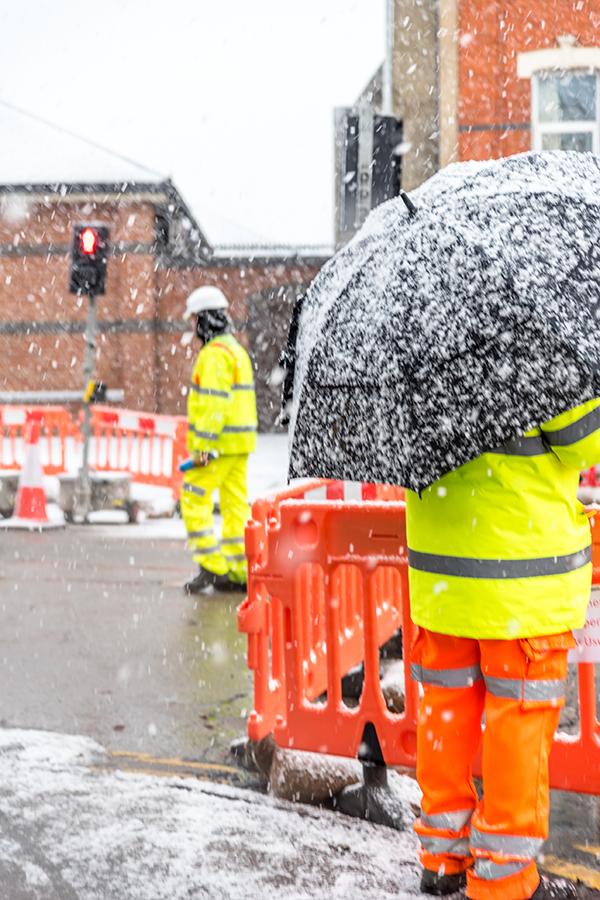Minimum UK temperature whilst at work? There isn’t one…
Your legal requirements
The health and Safety at Work Act 1974 and associated regulations require you to ensure the health, safety and welfare of your workforce whilst at work. They don’t specify either a minimum or maximum outside working temperature. But you need to keep employee wellbeing in mind. Whilst there aren’t specific legal temperatures to work outside, there are important requirements in the Workplace (Health, Safety and Welfare) regulations 1992. The law states that you must provide a reasonable environment to ensure your staff members remain safe and comfortable. Considering in Blighty that outdoor temperatures across most of the UK will be below 10°C for around four months of the year you should note the below guidelines.
Guidelines for working outdoors
If you have staff members working outside in cold weather, it’s important to take the appropriate measures to ensure there aren’t unnecessary hazards. The weather plays a massive part in an employee’s activities. It can affect their ability to do there job properly. For example, low temperatures will reduce their lifting ability. Cold weather can also be dangerous to an employee’s health. There are certain duties you must carry out to minimise health and safety issues. These include:
- Providing the correct Personal Protective Equipment (PPE)
- Training workers about the dangers of working in the cold
- Offer flexible breaks to encourage regular rests for warm drinks (not tea or coffee – these make you wee more losing valuable heat)
- Establish a safe working environment before employees begin their work.

Performing risk assessments
An overall health and safety inspection of your premises can significantly reduce the risk of staff members becoming ill. The Management of Health and Safety at Work Regulations 1999 requires you to do this. Performing risk assessments will help you reduce potential hazards. For external workers, keep in mind that cold environments can lead to serious health issues such as frost bite and hypothermia.
Working outside in cold weather
As noted above, in extreme conditions there can be instances of frostbite and hypothermia. These are very serious medical emergencies, so it’s vital you have the correct procedures and precautions to ensure your employees are not at risk. These can include:
- Rescheduling shifts to warmer times of the day, such as midday
- Providing suitable PPE
- Offering warm drinks (not tea and coffee) and food throughout the shift
- Providing additional breaks
- Delaying work if conditions become too extreme
- Train staff about the dangers they may face and issues to look out for.
